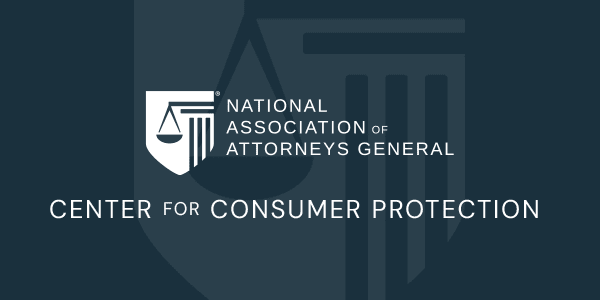In recent months, both the Federal Trade Commission (“FTC”) and the Consumer Financial Protection Bureau (“CFPB”) produced reports on the connection between minority populations and consumer issues.1 Each report came to the same conclusion: unfair and deceptive practices have unique and disproportionate impacts on communities of color. These findings suggest that more needs to be done to protect these communities from fraud. State attorneys general, along with consumer protection advocates, must understand the disparities in fraud and relief that occur within different communities of color and create strategies to combat the unfair and deceptive practices that abound.
The FTC’s October 2021 Staff Report, “Serving Communities of Color,” found numerous examples of fraud specifically targeting minority communities in such disparate markets as auto dealerships, advertising, inmate services, education, credit products, and government impersonation. In some cases, such as car sales and government services, offenders specifically targeted language barriers, hiding disclosures for dual language advertisements in English and feigning official government/nonprofit correspondence for immigration services. For example, in the Tate’s Auto case, the FTC alleged that a group of four auto dealerships and their owner falsified consumers’ income on vehicle financing applications, falsified consumers’ down payment information on financing applications and contracts, and disseminated deceptive ads offering vehicles for sale, financing, and lease. The company targeted members of the Navajo Nation, running radio and print ads in Navajo media.
In others, like credit reporting, payday lending, student lending, and inmate services, minority groups are disproportionately affected by the actions of companies. Additionally, in cases of for-profit colleges, auto financing, prepaid cards, and money-making schemes, fraudsters target minority communities to take advantage of particular circumstances — whether it is consumers’ lack information, their need for additional income or credit, or their tendency to use certain types of financial products.
Included in the FTC’s Report is research on communities of color, with demographic data from Consumer Sentinel reports and law enforcement actions. The FTC found that while Black and Latino consumers are more likely to experience fraud, Latino communities predominantly underreport compared with Black and White communities. Moreover, Latino and Black consumers report different rates of fraud concerning distinct categories of problem. While these trends are more thoroughly analyzed by the CFPB, the FTC found that their complaint database showed Black, and to a lesser extent Latino, communities experience higher rates of problems with credit bureaus and debt collections than White communities. White and Latino communities experience higher rates of impersonator scams than Black communities. Also, according to FTC payment method data, Black and Latino communities use credit cards, with their accompanying legal protections, at a substantially lower rate than in White communities.
Aware of the disparate impact of frauds on minority communities, the FTC’s Bureau of Consumer Protection has spent the past five years crafting outreach initiatives by engaging in conversations with community members, and educating them on common risks and best practices, while also learning what consumer issues are specifically affecting them. From this feedback, the FTC has been able to work with community partners to host trainings on a range of topics, including financial literacy; engaged with minority media outlets to inform consumers of fraud and other threats; and worked strategically to provide information in additional languages when there is both interest in and demand for those resources.
The CFPB’s September 2021 research brief, “Consumer Complaints throughout the Credit Life Cycle, by Demographic Characteristics,” addresses the issue in a different manner: engaging in an in-depth statistical analysis of their consumer complaint databases.2 Using census tract-level data over the lifetime of the CFPB complaint database, the brief focuses on the various stages of credit products’ life cycle (divided into four phases: origination, performing servicing, delinquent servicing, and credit reporting).
The CFPB brief corroborated the FTC’s research that minority and lower-income locations have greater complaint rates for credit reporting and delinquent servicing, while majority-White and higher income areas submit more complaints about origination and performing servicing.3 Black communities submit more complaints than any other group. Members of Black communities, unlike other races or ethnicities, are more likely to submit consumer complaints, as the proportion of their own race increases within their census tract. This might be a result of neighborhood “learning,” or a particularly effective community spread of CFPB awareness and financial remedies.
The CFPB reported similar, but more comprehensive results than the FTC, in analyzing the differing types of complaints submitted by demographic groups. For example, minority communities submit a larger share of complaints about past financial issues and identity thefts, while White and high-income areas report problems with current lenders and servicers. This illustrates a complex environment: Minority consumers have less access to new credit, including credit cards and mortgages, despite having enough financial acumen and awareness to make active efforts to monitor and raise credit. The CFPB concluded that factors creating this disparity include historic discriminatory inequalities in mortgage and credit access, the long-term impact of the 2008 financial crisis, and continuing inequalities in access.
The CFPB also analyzed their findings in light of the COVID-19 pandemic, as a quarter of all CFPB complaints have occurred since the declaration of the COVID-19 national emergency (March 13, 2020). The CFPB has pinned the increase in complaints during the pandemic primarily to mortgage complaints spurred by increased real estate activity and low interest rates. More specifically, the CFPB found a relative decrease in complaints concerning delinquent servicing and credit reporting because lower-income consumers used stimulus payments to aggressively pay down debt. Decreasing minority and low-income complaints of loan origination and performing servicing may also be a result of pandemic-era changes in access to credit: lenders tightening credit terms, which directly affects these groups’ abilities to secure loans.
The CFPB supported this broad analysis with narrow geographic case studies of New York City and St. Louis. The New York case study focused primarily on income, while the St. Louis study examined race variables. In New York City, lower-income tracts (upper Manhattan, Queens, and parts of Brooklyn) had fewer performing servicing complaints than higher-income tracts (lower Manhattan) with an opposite correlation for credit reporting complaints. In the St. Louis case study, the CFPB found that the northeast areas, majority Black tracts, submitted fewer complaints of performing servicing and more for credit reporting.
The CFPB acknowledges that their analysis is only a first step. It does not show, with granularity, whether demographic changes are a result of differing credit products offered, consumer use patterns, consumer likelihood to submit CFPB complaints, or purposeful disparate treatment by financial companies. Nevertheless, it does allow the CFPB to adjust its strategies to aid vulnerable communities and can prompt even greater research into CFPB complaints and minority consumers. This is an exceedingly important point; both the CFPB and FTC are signaling a greater emphasis on vulnerable communities and are beginning to lay out roadmaps to accomplish that goal.
Even though members of the consumer protection field have been speculating about these trends for years, and the CFPB and FTC are empirically supporting these theses, this is not the final step. The good news is that the FTC and CFPB are providing a wealth of information to use: data analysis, enforcement examples, case studies, examples of how to facilitate connections between community organizations, and academic research combine which make a powerful toolkit for achieving real, impactful relief to vulnerable communities. The FTC highlighted their joint radio tour and infographic venture with NAAG as particularly effective in spreading awareness of pandemic-related consumer issues. Although the reports don’t offer specific action items that attorneys general can pursue, they reveal issues of concern that merit additional attention by attorneys general as well as the FTC and CFPB to address any unlawful conduct.
The greater consumer protection world is simultaneously beginning to act alongside the FTC and CFPB. The National Consumer Law Center (“NCLC”) has published policy analysis supporting the expansion of “alternative data,” or nontraditional measures of consumer credit risk, in order to address inequity in credit history reporting.4 These measures can increase the “credit invisible” African-American, Latino, and low-income populations’ access to credit, and consequently credit products. The NCLC has also pushed for more vigorous enforcement by regulators for the benefit of all races and ethnicities, especially in the area of debt collection,5 in addition to specific enforcement against abusive and discriminatory tactics.6
The Consumer Federation of America, together with 47 other public interest groups, submitted comments in response to CFPB Requests for Information concerning the Equal Credit Opportunity Act.7 Not only is active participation in the federal rulemaking process an essential step in protecting minority consumers, but the public interest groups’ comments proposed several specific policy changes. These changes include enacting fair lending provisions to benefit small businesses, limiting federal preemption hamstringing state consumer protection efforts, and carefully monitoring the growth of artificial intelligence algorithm practices.
State attorneys general can take lessons and inspiration from federal regulators and policy organizations in educating and reaching consumers in minority communities while also looking to past successes. Actions like the 39-state January 2022 settlement with one of the nation’s largest student loan servicers, Navient; other multistate consumer protection settlements;8 debt collection prosecutions;9 legislative proposals;10 and the many enforcement actions by each attorney general office all help achieve relief for minority consumers.
There is much work to be done, but the FTC and CFPB are signaling a focus, pragmatically and analytically, on discrimination and inequity in consumer products and services. The network of federal agencies, public interest groups, and state attorneys general can continue to focus on minority and disadvantaged communities by enforcing consumer protection violations, collecting data on discrimination and disparate impact, being aware of innovative discriminatory business practices, and engaging in educational outreach with federal agencies and affected communities.
Other articles in this edition include:
- Consumer Chief of the Month
- Attorney General Consumer Protection News: January 2022
- Federal Consumer Protection News: January 2022

- Federal Trade Commission, Serving Communities of Color: A Staff Report on the Federal Trade Commission’s Efforts to Address Fraud and Consumer Issues Affecting Communities of Color, (Oct. 2021); Consumer Financial Protection Bureau, Consumer Complaint Research Brief, Consumer Complaints Throughout the Credit Life Cycle, by Demographic Characteristics, (Sept. 2021) (hereinafter “CFPB brief”). [↩]
- Synthesized with demographic information from the U.S. Census’ 2019 American Community Survey. [↩]
- CFPB brief, at 3-4. [↩]
- National Consumer Law Center (hereinafter “NCLC”), Credit Invisibility and Alternative Data: Promises and Perils, (July 2019); National Consumer Law Center, Doing Special Purpose Credit Programs Right: Why Programs to Assist Black Communities Should Avoid Conventional Use of Traditional Credit Scores, (Feb. 2021). [↩]
- NCLC, Racial Disparities in Consumer Debt Collection. [↩]
- See, e.g., NCLC, Advocates Praise FTC Action on Discrimination and Abuse at Car Dealer and Urge Further Efforts, (May 28, 2020); John W. Van Alst, NCLC, Time to Stop Racing Cars: The Role of Race and Ethnicity in Buying and Using a Car, (April 19, 2019). [↩]
- Consumer Federation of America, CFPB Urged to Strengthen Protections Against Discrimination, (Dec. 15, 2020). [↩]
- See, e.g., James Tierney, Several Significant Bipartisan Multistate Settlements that the Media is Barely Covering, (Jan. 7, 2019) and the Multistate Settlements Database maintained by the National Association of Attorneys General. [↩]
- See, e.g., James Tierney, AG Prosecutions Targeting Debt Collectors, (Nov. 5, 2018). [↩]
- See, e.g., Office of the Attorney General of the District of Columbia, AG Racine Introduces Legislation to Stop Discrimination In Automated Decision-Making Tools That Impact Individuals’ Daily Lives, (Dec. 9, 2021). [↩]





